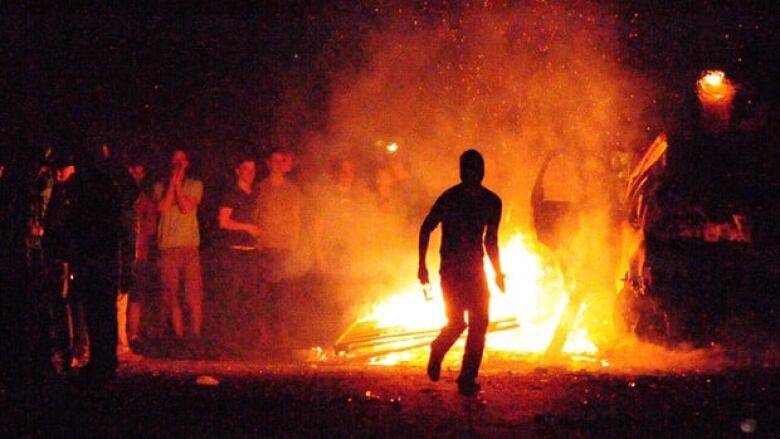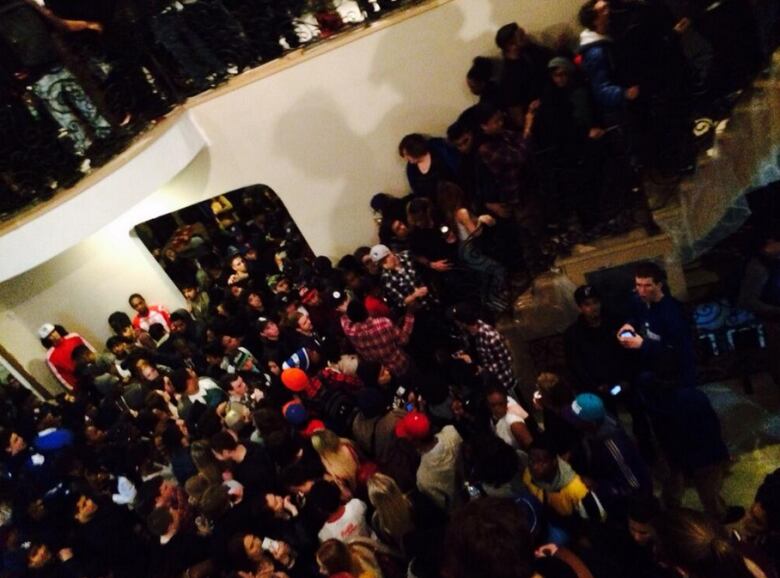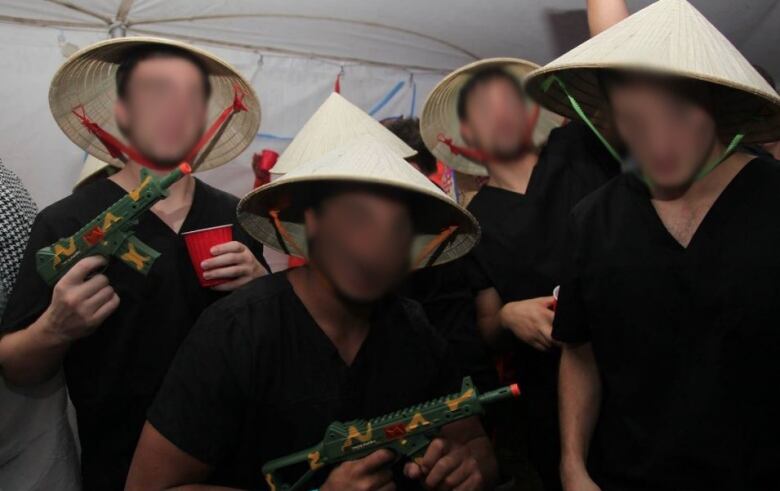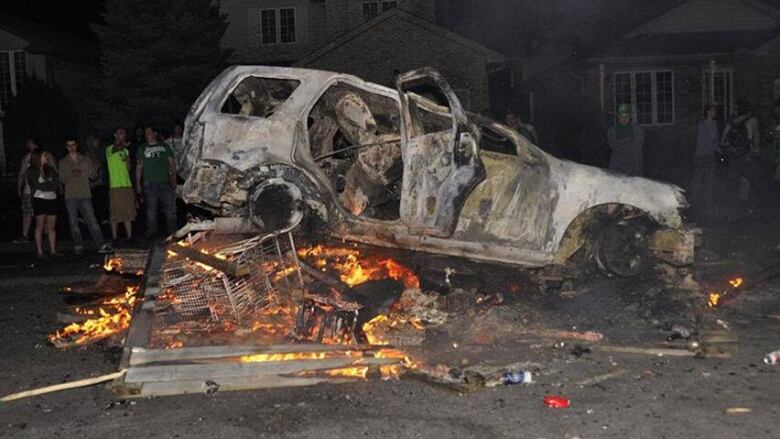How social media brings reputation risk for St. Patrick's revelers
3 reasons why a smartphone can deliver more trouble than the law for partiers

A University of Waterloo professor who studies social media says students who drink and party to excess on St Patrick's Dayface far greater consequences from their outrageous actions being documented online than from any ticket issued by a police officer.
"You really don't want that photo of you throwing up in someone's rose bushes haunting Google searches of you forever."- AimeMorrison
It comes as law enforcement agencies to issuetheirusual reminders student party goers ahead of St Patrick's Day celebrations in college towns across Canada.

- Waterloo RegionPolice charge 14 people, seize 4,400 beers(2014)
- What Waterloo police do with all the kegs they seize on St. Patrick's Day(2016)
"You really don't want that photo of you throwing up in someone's rose bushes haunting Googlesearches of you forever," she said in an interview with CBC Kitchener-Waterloo'sThe Morning EditionThursday.
The researcher then went on to list the three reasons why social media carries far more personal consequences to St Paddy's Day revelers than the law.
1. Events can grow out of control
"Advertising events on social media or publicizing events as they happen can lead to events growing exponentially out of control," Morrison said, explaining some business owners have noted that when a student promotes their events online through social media, it can bring crowds of 300 to 400 people an hour.

"He said he was planning for about a thousand people, but 2,000 people showed up and there was such a lineup of people that they were breaking the windows to get into the house," she said.
"Thehouse was completely trashed and he called the police on his own party because it just kept getting bigger and bigger and bigger."

2. Performing for the camera
Morrison said the widespread adoption of smartphones with cameras means everyone is a photographer, which can compound a situation already rife with mayhem.
People are always saying 'I didn't think it was going to spread' and it always does.- AimeMorrison
"We perform sometimes for our cameras or for our social media feeds.We're doing ever-more outrageous behaviour so we can take a picture of it and put it online," she said.
Morrison noted people will often share those photographs in an effort to glamourize bad behaviour, which can lead to others being copycats or engaging inone-upmanshipto behave even more outrageously.
What adds to the problem,Morrison said, is that the portability of smartphonesand thespontaneousnature of commenting and reaction onsocial media makes potentially embarrassing pictures quick and easy to share over a vast social network.
"It's super easy to lose control of these photos. People will screen-grab Snapchats all the time. People will save things to their own camera rolls," she said.

Morrison'spoint is underscored by a 2016 incident at Queen's University in Kingston,after photos appeared onlineshowingwhite people dressed as Buddhist monks, Middle Eastern sheiks, Mexicans andVietCongfighters in rice hats during an off-campus student party in Kingston, Ont.
"People are always saying 'I didn't think it was going to spread' and it always does. So if you don't want that picture to be seen by the entire world, don't share it on social media," she said.
3. Police use social media too
Morrison said anyone advertising a party or sharing theiroutrageous behaviour through social media also risks grabbing the attention of police, who, like all of us, use social media.
"You can search Facebook right now and search for any events related to St. Patrick's in Waterloo, that's not hard to do," she said, noting officers are monitoring social media platforms using the same hashtags and filters students do.
"It's pretty easy to monitor," she said. "If students can discover them, law enforcement can discover them."

When a St Patrick Day celebration by Fanshawe College students in London, Ont. took a nasty turn and spilled into the streets in 2012, riots broke out.
- London's Fanshawe College suspends 8 students for riot
- St. Patrick's Day riot in London yields more arrest
Rioters pelted police with glass bottles, vandalized nearby propertiesand overturned a car and set it on fire, doing $100,000 damage.
Police later used video taken during the riots to lay charges andMorrisonsaid much of it was turned over byfellow party-goers.

Morrison said she realizes students are never going to leave their smartphones at home, so she shares this advice:
- Don't perform stunts for the camera.
- Don't plan events onsocial media.
- If you do want to party, go to an official event.
"Let somebody else be in charge of the policing and the cleanup," she said. "Maybe these private house parties are not the way to go."












_(720p).jpg)


 OFFICIAL HD MUSIC VIDEO.jpg)
.jpg)



























































































